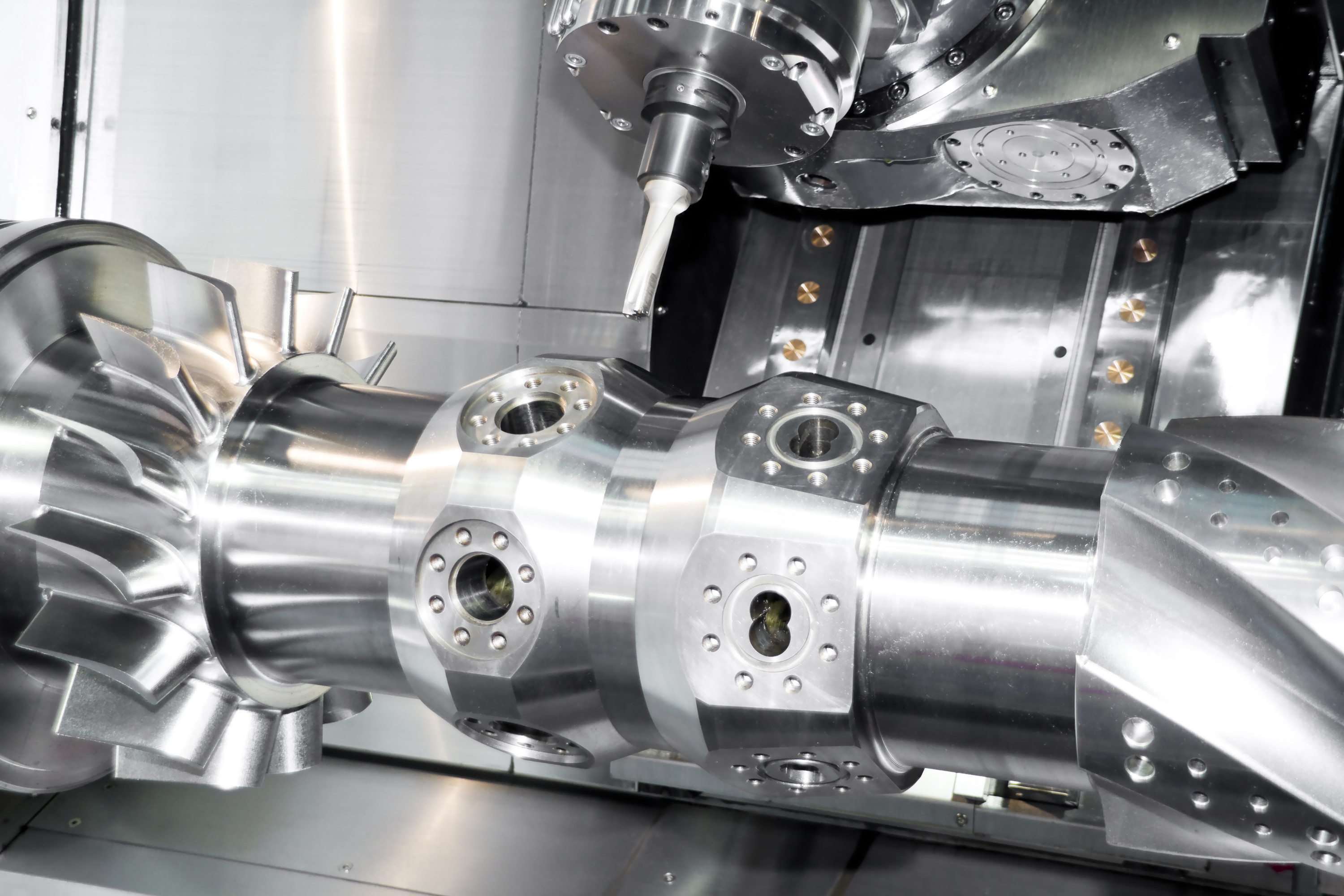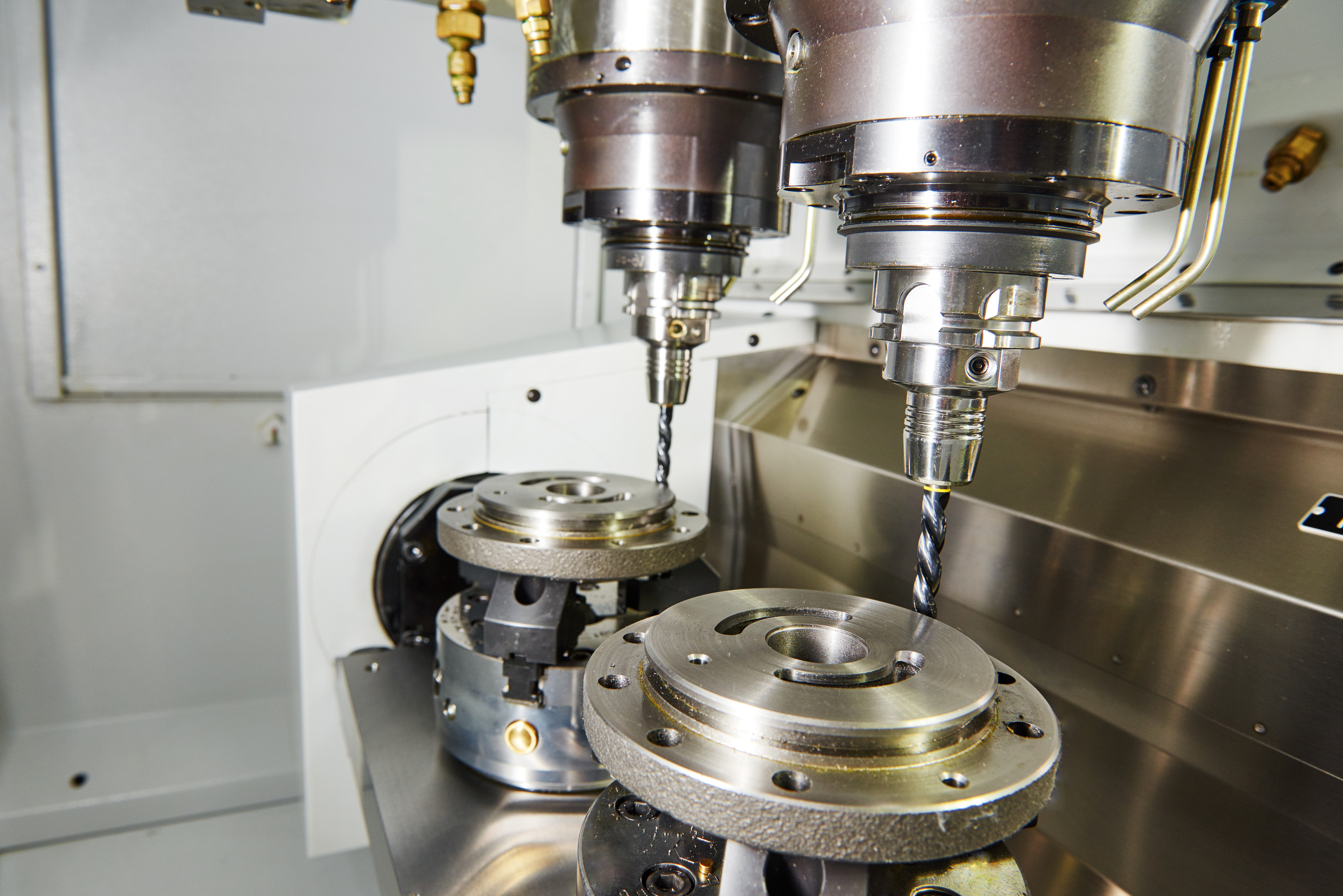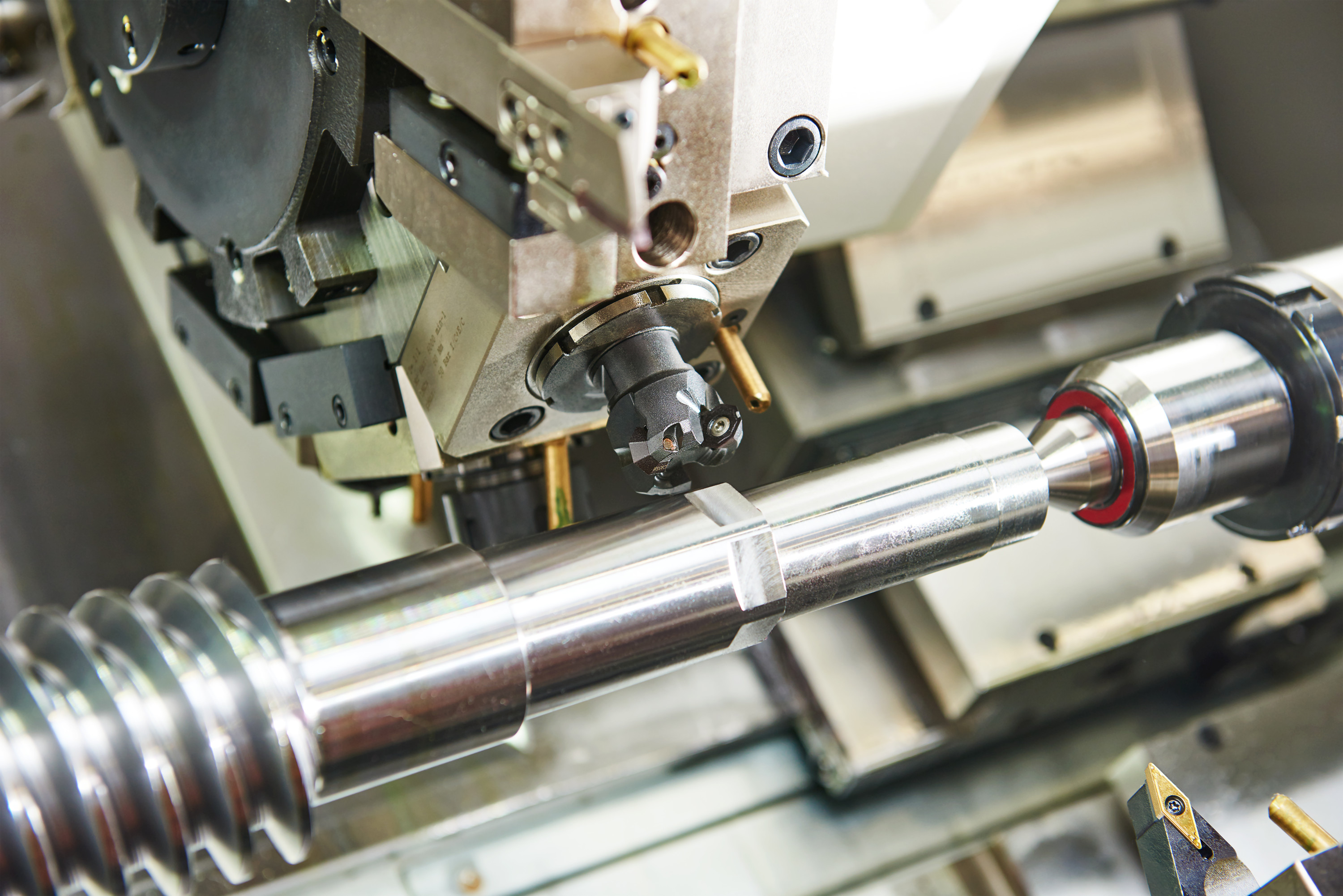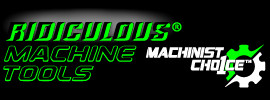What is a Machine Tool: Definition, Types & Applications
Posted by IMRMT on Apr 2nd 2024
Introduction
Machine tools are specialized devices used for shaping, cutting, or finishing materials. They play a crucial role in modern manufacturing processes.
These tools have come a long way from basic lathes to advanced Computer Numerical Control (CNC) machines. Their standardization and uniformity make them essential in large-scale manufacturing.
Characteristics of Machine Tools
Machine tools are known for their:
- Precision
- Rigidity
- Power
- Repeatability
Power Sources for Machine Tools
Machine tools can be powered by various sources, including:
- Manual efforts
- Water
- Steam
- Electricity
- Hydraulic systems
- CNC systems
Important Types of Machine Tools
Some important types of machine tools include:
- Turning machines (lathes)
- Drilling machines
- Milling machines
- Grinding machines

Applications of Machine Tools
Machine tools find applications in multiple industries, such as:
- Automotive
- Aerospace
- Construction
- Electronics
- Medical fields
They offer numerous benefits, including:
- Improved precision and repeatability
- Substantial cost savings resulting from reduced material waste and increased production rates
Evolution of Machine Tools
Historically, the development of machine tools can be traced back to ancient times. Ancient lathes, among the earliest known machine tools, pioneered the concept of mechanized tooling. These rudimentary devices were manually operated, with workers using hand-held cutting tools to shape materials.
Fast forward to the Middle Ages, water and wind became common power sources for machine tools. This transformation marked a significant step forward in the evolution of machine tools, allowing for more efficient and less labor-intensive operation.
In the 19th century, another major shift occurred with the Industrial Revolution. Steam power and later electricity revolutionized machine tools yet again, permitting even greater efficiency and precision.
Modern CNC machines, however, stand apart as a milestone in the history of machine tools. The integration of computer numerical control (CNC) technology with traditional machine tools in the late 20th century sparked a revolution in mechanized tooling.
CNC machines utilize pre-programmed computer software to dictate the movement of machinery. This technology allows for precise control over speed, coordination, position, and feed rate of the tool during operation. As a result, CNC machines can produce complex shapes that would be almost impossible to achieve with manual machining.
The evolution from ancient lathes to modern CNC machines illustrates not only advancements in technology but also our relentless pursuit for efficiency and precision in manufacturing processes. As we delve further into various types of machine tools in subsequent sections, we'll explore how these technological advancements have shaped their function and utility in modern-day industries.
Types of Machine Tools
Machine tools can be classified into different categories based on their specific functions. This section discusses five main types of machine tools: Turning Machines (Lathes), Shapers and Planers, Drilling Machines ,Milling Machines, and Grinding Machines.
1. Turning Machines (Lathes)
A turning machine, also known as a lathe, is a machine tool that rotates a workpiece on its axis to perform various operations such as cutting, sanding, knurling, drilling, or deformation. These operations are typically performed by tools that are applied to the workpiece to create an object with symmetry about an axis of rotation. Examples include creating bolts, crankshafts and camshafts.
2. Shapers and Planers
Shapers and planers are machine tools that use linear relative motion between the workpiece and a single-point cutting tool to machine a linear toolpath. Their main difference lies in the direction of the cutting action.
- Shapers: The cut in a shaper is linear (in line with a crank) and horizontal.
- Planers: The cut in a planer is linear (along the length of the work) but vertical (i.e., depth).
These machines are generally used for machining flat surfaces but can also produce irregular surfaces.
3. Drilling Machines
Drilling machines are used for creating holes in materials. They can be either manually operated or powered by electricity. Some common types of drilling machines include:
- Upright Drills: These are large machines that handle heavy-duty work.
- Bench Drills: Smaller than upright drills, they handle lighter work.
- Radial Drills: These are versatile machines that allow the operator to position the drill head over a large area.

4. Milling Machines
Milling machines are versatile machine tools used to shape solid materials. They can perform a multitude of tasks such as drilling, routing, planning, slot cutting, etc. Milling machines are broadly classified into two types:
- Horizontal Milling Machines: The spindle is mounted horizontally and the cutters are held in a horizontal arbor.
- Vertical Milling Machines: The spindle is mounted vertically and the cutters are held in a vertical spindle orientation.
5. Grinding Machines
Grinding machines remove material from the workpiece by abrasion to create fine finishes or close tolerances. They are typically used for finishing parts that require low surface roughness and high accuracy of shape and dimension. Some common types of grinding machines include:
- Surface Grinders: Used for creating smooth finishes on flat surfaces.
- Cylindrical Grinders: Used for shaping the outside surfaces of an object.
- Belt Grinders: Commonly used in metallurgical applications for surface preparation.
These five categories represent the most common types of machine tools. Each serves a unique purpose in manufacturing and production settings.
Power Sources and Automation in Machine Tools
Machine tools have undergone a remarkable transformation in terms of power sources. The evolution from manual labor to advanced CNC systems reflects the continuous quest for efficiency and precision in manufacturing.
Power Sources Through the Ages
Here's a look at how power sources have evolved over time:
- Manual Efforts: In the early days, hand-operated tools were the standard. Craftsmen would use muscle power to shape and form materials.
- Water Power: With the advent of the Industrial Revolution, water wheels became a common power source, harnessing natural energy to drive mechanical processes.
- Steam Power: The introduction of steam engines marked a significant leap forward. Steam power enabled more robust and consistent operation of machine tools.
- Electricity: Electrification brought about a new era of convenience and flexibility. Electric motors allowed for greater control over machine tool operations.
- Hydraulic Systems: The development of hydraulic technology provided yet another means of powering machine tools. Hydraulics offer high levels of force and precision, particularly in pressing and bending operations.
- CNC Systems: The crown jewel of modern machine tool power sources is undoubtedly CNC technology. CNC systems utilize computer programming to automate complex machining tasks.
Benefits of Automation
Automation plays a pivotal role in today’s machine tool landscape:
- Enhanced Precision: Automated machine tools execute tasks with incredible accuracy, reducing human error significantly.
- Increased Productivity: Automation enables faster production rates without sacrificing quality, leading to greater throughput.
- Consistent Quality: With automated systems, each part or component is manufactured with uniform standards, ensuring consistent product quality.
The shift towards automation has been instrumental in shaping the capabilities of modern machine tools. As industries strive for perfection and efficiency, automation stands as a key contributor to these goals.
By integrating computer programming with traditional machining techniques, CNC systems have become central to the operation of many types of machine tools. This synergy between human expertise and automated precision ensures that machine tools can meet the exacting demands of contemporary manufacturing sectors.
Importance and Applications of Machine Tools
Machine tools are essential in modern manufacturing. They enable the creation of complex components with high precision and consistency. Their significance in industry cannot be overstated, as they directly influence both efficiency and cost-effectiveness in production cycles.
Efficient Manufacturing Processes
Machine tools offer several benefits that contribute to efficient manufacturing processes:
- Precision: Machine tools ensure that each part manufactured meets stringent specifications, reducing the need for rework and ensuring high-quality products.
- Speed: With the ability to operate continuously, machine tools significantly reduce production times.
- Repeatability: The ability to produce parts with the same dimensions over and over again is crucial for mass production.
- Material Utilization: Advanced machine tools optimize the use of materials by minimizing waste during the manufacturing process.
Applications Across Industries
Machine tools have a wide array of applications across various sectors. Each industry benefits from the specialized capabilities of different types of machine tools:
- Automotive: In an industry where precision is paramount, machine tools are used to manufacture engines, transmissions, and other critical components.
- Aerospace: Here, the focus is on lightweight materials and complex geometries. Machine tools play a vital role in creating components that can withstand extreme conditions.
- Construction: High-strength parts for machinery and structures are produced using robust machine tools capable of handling heavy materials.
- Electronics: Precision is critical at the micro level where machine tools are used to fabricate circuit boards and housings for electronic devices.
- Medical Fields: Machine tools contribute to producing surgical instruments and medical implants with high precision required for patient safety.
By integrating advanced technologies like CNC and automation, these industries continue to push the boundaries of what can be achieved through modern manufacturing processes. As a result, machine tools not only facilitate the production of everyday products but also inspire innovation by providing manufacturers with the means to realize intricate designs and ideas.
Characteristics, Cutting Tool Types, and Benefits
Machine tools are the backbone of precision manufacturing. Their efficiency can be attributed to several key characteristics:
- Precision: The ability to achieve exactness in measurements and operations, leading to uniformity in produced parts.
- Rigidity: Sturdy construction that resists deflection under heavy loads, ensuring dimensional accuracy.
- Power: Sufficient drive to cut through materials ranging from soft plastics to hardened metals.
- Repeatability: Consistency over many cycles, allowing for mass production of identical parts without variance.
These characteristics are critical in the selection and performance of machine tools, which are equipped with a variety of cutting tool types for specific tasks:
Cutting Tool Types
- Single-point tools: Used primarily in turning operations on lathes, these have one cutting edge and can shape materials into cylindrical forms.
- Multi-point tools: Examples include milling cutters and drill bits where multiple edges participate in material removal.
- Abrasive tools: Grinding wheels fall into this category, removing material by abrasion rather than shearing.
- Cutting inserts: Typically made of carbide or other hard materials, these detachable tips are used in a range of applications from turning to milling.
Advanced machine tool technology bestows several advantages:
- Enhanced Efficiency: Faster production times due to high-speed operations and reduced setup changes.
- Superior Quality: High precision leads to fewer errors and defects in final products.
- Material Conservation: Precise cuts mean less waste of raw materials.
- Versatility: Ability to handle various materials and complex shapes with the same equipment.
- Cost Savings: Increased productivity combined with reduced labor costs translates into savings for manufacturers.
By leveraging these benefits, industries can maintain competitiveness while meeting the demand for quality products.
Customization, Adaptability, and Future Trends
Customization and adaptability are crucial in the advancement of machine tool technology. These qualities have become increasingly important to manufacturers who want to stay competitive.
CAD/CAM Technologies: A Gateway to Versatility
- CAD (Computer-Aided Design) software allows for the meticulous designing of parts with intricate geometries.
- CAM (Computer-Aided Manufacturing) systems convert these designs into precise instructions for machine tools.
- Together, CAD/CAM technologies enable customization of machine operations to produce unique and complex parts.
The combination of CAD/CAM systems and machine tools means that products can be tailored to specific requirements without significant downtime or retooling costs.
Driving Innovation in Machine Tooling Processes
- With CAD/CAM integration, prototyping becomes faster and more efficient, accelerating innovation cycles.
- Manufacturers can switch between product designs more swiftly, enhancing their ability to respond to market demands.
Emerging Trends in Smart Machine Tools
Smart machine tools represent the next phase in manufacturing excellence. These tools are embedded with sensors, actuators, and control systems that enable them to self-optimize.
- Self-Monitoring: Smart machine tools can predict maintenance needs and reduce downtime.
- Data Analytics: Integration with IoT (Internet of Things) platforms allows for real-time data analysis to optimize production processes.
- Machine Learning: Over time, smart machine tools learn from past operations, improving their performance autonomously.
The combination of these technologies results in a powerful ecosystem where adaptability is not just a feature but a fundamental aspect of the manufacturing process.
By embracing these future trends, companies can look forward to a landscape where mass customization is not only possible but also economically viable. As smart machine tools evolve, they promise an era of unmatched efficiency and flexibility in manufacturing.
Conclusion
Machine tools are at the core of manufacturing, turning raw materials into parts that power our world's machinery and infrastructure. The evolution from ancient lathes to today's CNC machines represents a constant drive for perfection in accuracy and efficiency. As discussed in this article, these tools have the potential to drive innovation across various industries.
To make the most of modern machine tools:
- Check out Ridiculous Machine Tools, a one-stop shop for a wide range of high-quality equipment including Live Centers, End Mill Holders, Collet Chucks, Taper Adaptors, ER Spring Collets, Drill Chucks, Arbors, Toggle Clamps, and more.
- Explore accessories like Live Centers, End Mill Holders, and ER Spring Collets to enhance your machining capabilities.
- Consider using Taper Adaptors, Drill Chucks, or Toggle Clamps to improve the performance of your production line.
Investing in advanced machine tools means investing in both the quality of your products and the future of your manufacturing processes. Whether you need to turn, mill, or grind, Ridiculous Machine Tools offers the gear you need with precision.
Incorporating these state-of-the-art tools into your workflow will lead to significant improvements in your production capabilities. Start your journey towards optimized manufacturing by choosing the right equipment – make sure you have what it takes to excel.
FAQs (Frequently Asked Questions)
What is the significance of machine tools in manufacturing processes?
Machine tools play a crucial role in various industries by enabling efficient and cost-effective manufacturing processes. They are essential for shaping, cutting, drilling, and finishing raw materials into finished products.
How have power sources evolved in parallel with machine tool technology advancements?
Power sources for machine tools have evolved from manual efforts to water power, steam power, electricity, and hydraulic systems. The introduction of CNC systems and automation has further enhanced precision and productivity in modern machine tools.
What are the key industries and sectors benefiting from machine tool utilization?
Machine tools are widely utilized in industries such as automotive, aerospace, construction, electronics, and medical fields. These sectors rely on machine tools to enable efficient manufacturing processes and the production of high-quality components.
What are the essential qualities that define reliable machine tools?
Reliable machine tools exhibit characteristics such as precision, rigidity, power, and repeatability. They also employ different cutting tool types for specific machining operations, offering benefits such as increased efficiency and accuracy.
How do CAD/CAM technologies contribute to greater versatility and innovation in machine tooling processes?
CAD/CAM technologies enable customization and adaptability in machine tooling processes by providing advanced design and programming capabilities. They play a key role in shaping future trends towards smart machine tools that offer enhanced functionality.
Where can readers explore a range of high-quality machine tools for their manufacturing needs?
Readers can explore a range of high-quality machine tools at RidiculousMachineTools.com. This platform offers advanced equipment that can be leveraged for various manufacturing needs.

